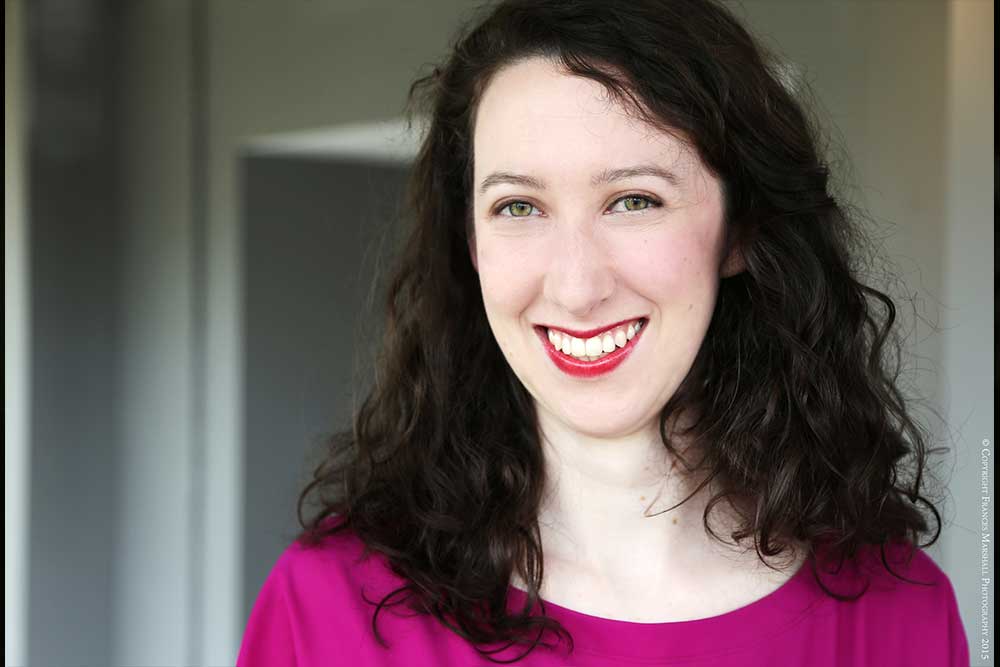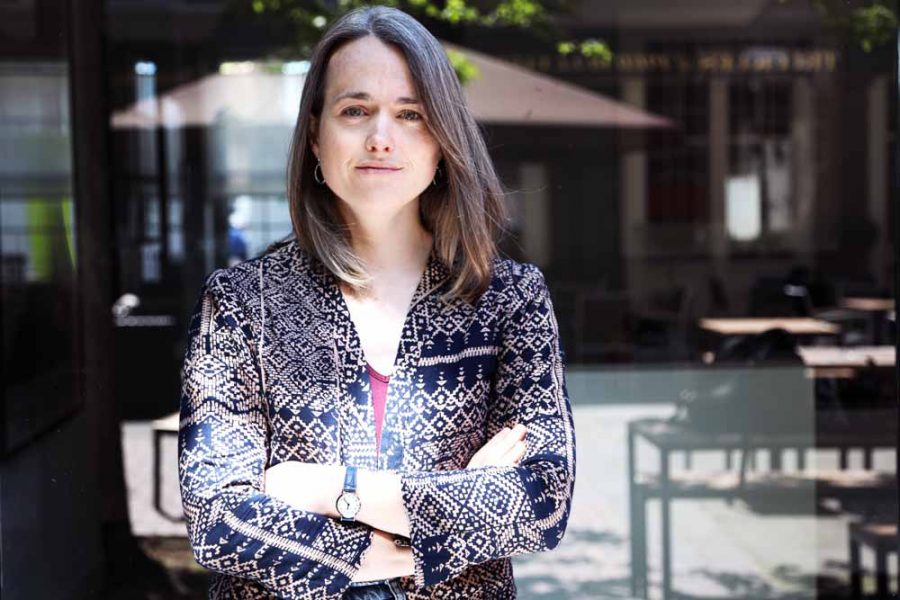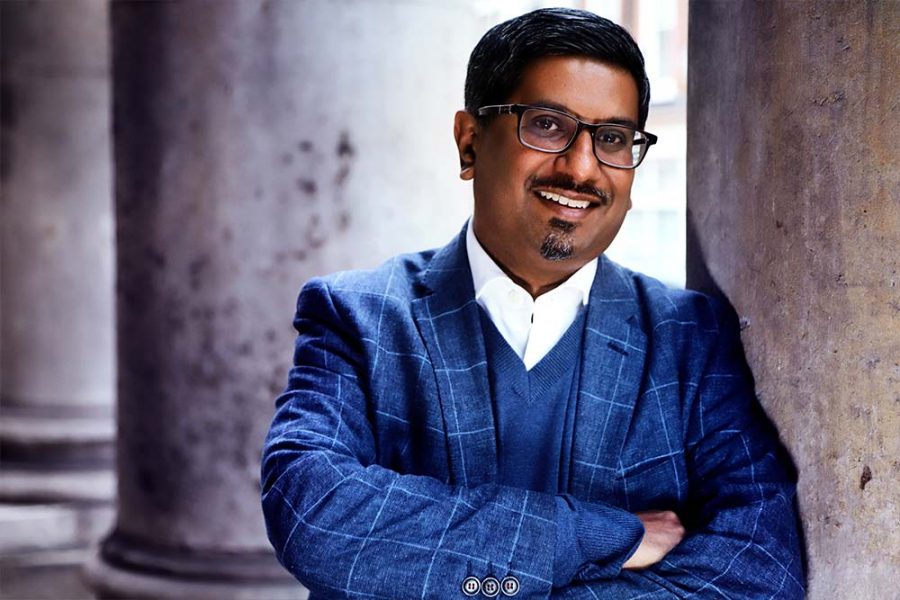Frozen Music: Áine Nic an Ríogh

May 2015
Words by
Emer Nestor
Photos by
Frances Marshall
Áine Nic an Ríogh is artistic director of @TheDrawingRoom and a doctoral student at UCD. She speaks to Final Note about her involvement in arts administration and her successful pairing of music and architecture within her research.
I have always loved design, the composition of different textures and the opportunity to create something beautiful and lasting."

What enticed you into the world of architecture?
I have always loved design, the composition of different textures and the opportunity to create something beautiful and lasting. Admittedly my early attempts at tree-houses, and secret dens were neither beautiful nor lasting! As a child I was a big fan of LEGO and the opportunity to create fantasy lands and buildings drew me in. But really I had no concept of architecture until my first day in UCD! It has been a challenging and exciting path, and I am still expanding my horizons each day.
Tell us about your violin studies.
I’ve played music for as long as I can remember, starting Suzuki violin just before my 4th birthday. For years my parents brought my tiny violin and I to Malahide for lessons with Dorothy Conaghan, and later to Blackrock where I studied with Brian McNamara. It was Brian who introduced me to my full sized violin which I still love, and to the fantastic ensemble, the National Youth Orchestra of Ireland. What an opportunity, at the age of 17, to perform with Maxim Vengerov, followed by Wagner’s Ring Cycle — some wonderful years with the NYOI!
I started piano a few years after violin with Edward Holly, who has, over the years, afforded me so many excellent opportunities. I stayed with Edward until I completed my teaching diploma in my first year of college, at which point architecture slowly began to take over. I’ve managed to continue my music throughout my college years and I’ve particularly enjoyed performing with the UCD Symphony Orchestra. I recently embarked on a new musical path joining Enchiriadis Chamber Choir — a different, but fun challenge.
Are you from a musical family?
We didn’t start out as a musical family. While my parents love music, they didn’t play much themselves. As the eldest I was the first to start, with my two younger sisters following in my footsteps. We now have a sister trio — two violins and a cello, and we all play piano — great fun for family gatherings!
Where did your interest in music and architecture come from?
Architecture and music have always been close to my heart, and having played music for so long, and then later studying architecture in university, it was inevitable that I would eventually combine them!
How does this pairing work?
Goethe famously stated that “Architecture is frozen music“. In university I was amazed by the number of people in architecture who were musical and had continued with their musical studies to a high level. Architecture and music are creative arts — expressions of ideas (be they visual or aural) — and they often inspire each other. I recall staying at Le Corbusier’s La Tourette Monastery in France while on Erasmus, and one evening I came across a magnificent window broken into what appeared to be random divisions of varying widths and heights. In reality it was a carefully composed rhythm frozen in time by Xenakis. It was inspiring to see such a composition so closely related to both architecture and music.
Your PhD topic on music, architecture and acoustics in 18th-Century Irish Country Houses is quite interesting — what brought you to this field of research?
I have always loved historical properties, visiting them and reading about life in them, so when my tutor suggested a project in the final year of my undergraduate studies, I agreed. At that time I didn’t realise how quickly I would come to enjoy the research. Following my final-year dissertation my tutor, who later became my PhD supervisor, suggested I extend my research to PhD level. So, with the support of an Irish Research Council Scholarship, I became absorbed in the wonderful, hidden world of historical acoustics.




The idea is quite complex and has many layers; it is not just a concert, but an experience."

How are academics from the worlds of music and architecture reacting to this study?
There has been a great response from both worlds. Previous studies on the acoustics of historical buildings have been primarily concerned with churches and concert halls. The domestic architecture of the music room is something which has not been investigated before, which I find unusual. Concerts are still held in these rooms today, and have been for the past 200 years. Compared to concert halls which are often rebuilt, renovated and adopted to please the evolving aesthetic of acceptable acoustics, the domestic music room, has for the most part, remained as it was designed — an intimate space for chamber music. This concept is fascinating to both those in the music world, and those in architecture.
What motivated you to get involved with musical event productions?
My first foray into this area was as part of my PhD. It was a way to collect data and live recordings for my research. While organising and holding these events I discovered the niche market that I have pursued, and also the joy and satisfaction in unveiling these hidden gems, both musical and architectural. I am always on the lookout for new directions and ideas, and have had great success to date with the Mountjoy Square Music Series, and with @TheDrawingRoom. Who knows what I will take on as my next project!
Are audiences reacting well to the whole concept of concerts such as these?
I have received great feedback, both in Ireland and internationally, for the concerts. It is wonderful to receive such support, particularly from those who are abroad and have stumbled across the concept. The idea is quite complex and has many layers; it is not just a concert, but an experience. Alongside excellent music from brilliant musicians, the audience has the opportunity to visit the concert venue, and I often give a short introduction on the history of the venue (sometimes with the help of the venue’s owner or from an external expert). I have also recently teamed up with Arran Henderson of Dublin Decoded walking tours who is working with @TheDrawingRoom for three events this year. Arran is leading walking tours prior to the concerts. Each one is tailored to the location and performance in each venue. As the venues are small and intimate, the audience members have had the chance to get to know each other. There is a feeling that they are part of something special.



What are you hoping to prove from this research?
I am investigating the architectural thought and design behind the music rooms and whether architects of the eighteenth century were aware of the concept of acoustics in their designs. This is of course very difficult to prove with the fragmentary evidence which remains, however, it is clear that the science of acoustics was closely investigated in the seventeenth and eighteenth century with a strong body of research emanating from the Irish scientific community.
I am also investigating the role of music in the eighteenth-century country house and its importance within the lives of Irish families at that time. Music was intrinsically linked with life in the country house, and it has been fascinating reading the letters and journals of the families in these houses.
Do you intend to move into academia, or is arts administration the place to be?
In an ideal world I would balance the two. I would love the opportunity to expand my knowledge further, but also, more importantly, to share this knowledge with others. Schools of Architecture are very exciting places, always evolving and creative, so it would be a fantastic personal challenge to teach in such a place. Having set up my production company in 2010, I have thoroughly enjoyed my experiences in arts administration. It is a challenging and competitive environment, but I love the creativity of the job and the opportunity to bring fantastic events to an audience.
Have you any desire to pursue a career in architecture?
At the moment I have just moved from an architectural position to working in the entrepreneurial community. I don’t think I will ever completely move away from architecture.
What is your involvement in the Drogheda International Classical Music Series, and the Dublin Philharmonic?
A number of years ago I was invited to sit on the committees for both the Drogheda International Classical Music Series and the Dublin Philharmonic Society. I thoroughly enjoyed the experience. It is wonderful to be involved in the Drogheda International Classical Music Series, bringing such high calibre Irish and international performers to Drogheda. We are slowly rebuilding the once strong and vibrant classical community in the area, and it has been such a privilege to work with the committee in achieving this aim.
The Dublin Philharmonic Society, is similar to @TheDrawingRoom concerts in that we hold performances in members’ homes. The Dublin Philharmonic Society will celebrate its 275th Anniversary this summer, and it’s great to be involved with such a historic institution. The Dublin Philharmonic Society provides performance opportunities for young musicians who are moving into the professional sphere. It is such a joy to see such excellent talent in Ireland and to be able to support these young musicians as they enter the competitive world of professional music.
What do you enjoy most about your work?
I love seeing a full audience, people chatting with each other, exploring the venue and sitting back to enjoy a great performance. This summer I am really enjoying the opportunity to bring two international jazz ensembles to Dublin — definitely something very different. I am planning to push musical boundaries a little more next year, but am conscious of also retaining the original classical core with which I began.
How does Classical Music inspire you?
I love the range of emotions and textures one finds in classical music, ranging from the simplest child’s composition to the symphonies. I love the great harmonies and dissonances which are built up slowly, layer upon layer, to create magnificent colours and sounds.
What can we expect from the @TheDrawingRoom series?
I have already started to plan next year’s series, kicking off in October. Many different ensembles from the contemporary and classical worlds have approached me, and I am looking forward to programming the season. For the past 3 years I have been supported by Dublin City Council, and this year’s funding is being used to hold an installation and workshop disseminating my research in acoustics. This installation will kick off the series and coincide with Open House Weekend 2015. I always welcome hearing from new venues and from musicians who would like to get involved in the project and of course anyone who would like to take over sponsorship of @TheDrawingRoom for 2016. It is a very rewarding project to work on.
Irish harpist and composer, Anne-Marie O’Farrell, will perform at 12 Henrietta Street, Dublin 1, on Sunday 31 May. For this concert @TheDrawingRoom is partnering with the Association of Irish Composers as part of the Irish Composers on Irish Music Series. Arran Henderson will lead a walking tour of North Georgian Dublin prior to the concert and details of the walk are available on the @TheDrawingRoom website.
All images displayed in this article are subject to copyright.
Share this article





